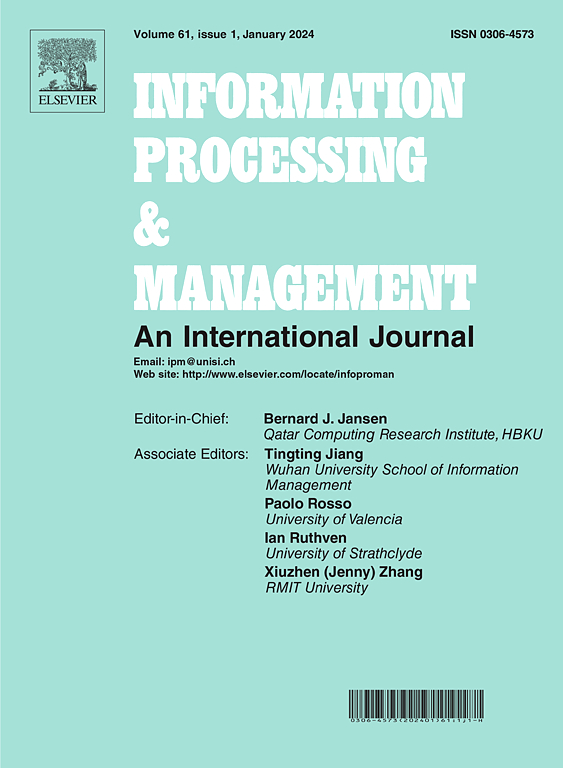Management of evaluation processes and creation of authentication metrics: Artificial intelligence-based fusion framework
IF 6.9
1区 管理学
Q1 COMPUTER SCIENCE, INFORMATION SYSTEMS
引用次数: 0
Abstract
While the literature extensively covers various authentication systems, management of evaluation processes and creation of authentication metrics remain significant information challenges for researchers. To overcome this complex challenge, we present a taxonomy of research processes based on fusion and fuzzy strategies and give an overview and comparison of related studies. Specifically, we develop an artificial intelligence-based fusion framework (ff) incorporating Mamdani-type fuzzy rules and key user factors: security, privacy, and trust. Its uniqueness and innovation lie in the application of trapezoidal functions to describe these factors as key input metric values. Moreover, we are the first to incorporate trust as an independent comparative factor and provide a comparison of traditional and modern authentication methods, including artificial intelligence (AI), electroencephalogram (EEG), electrocardiographic (ECG), and photoplethysmogram (PPG) methods. Also, we use a workflow diagram to define the topological relationships among user factors and authentication factors, clarifying the role of fusion in multi-factor authentication (MFA) approaches. In comparison to other similar frameworks implemented solely for traditional methods, the proposed ff yields better and more realistic quantification metric results. In addition, we present and discuss the key mathematical differences between one-factor authentication (1FA) and MFA, aiming to shed light on issues such as complexity and bias. Lastly, the developed ff not only advances MFA metrics by introducing modern authentication methods such as AI, EEG, ECG, and PPG but also paves the way for future research on how and why AI algorithms need to be incorporated into information processing and the creation of strong MFA solutions.
评估过程的管理和认证度量的创建:基于人工智能的融合框架
虽然文献广泛涵盖了各种认证系统,但评估过程的管理和认证度量的创建仍然是研究人员面临的重大信息挑战。为了克服这一复杂的挑战,我们提出了基于融合和模糊策略的研究过程分类,并对相关研究进行了概述和比较。具体来说,我们开发了一个基于人工智能的融合框架(ff),结合了mamdani型模糊规则和关键用户因素:安全、隐私和信任。它的独特之处在于应用梯形函数将这些因素描述为关键输入度量值。此外,我们是第一个将信任作为一个独立的比较因素,并提供传统和现代认证方法的比较,包括人工智能(AI),脑电图(EEG),心电图(ECG)和光电容积描记图(PPG)方法。此外,我们使用工作流图来定义用户因素和认证因素之间的拓扑关系,阐明融合在多因素认证(MFA)方法中的作用。与仅针对传统方法实现的其他类似框架相比,所提出的ff可以产生更好和更现实的量化度量结果。此外,我们提出并讨论了单因素认证(1FA)和MFA之间的关键数学差异,旨在阐明复杂性和偏差等问题。最后,开发的ff不仅通过引入现代认证方法(如AI, EEG, ECG和PPG)来推进MFA指标,而且还为未来研究如何以及为什么需要将AI算法纳入信息处理和创建强大的MFA解决方案铺平了道路。
本文章由计算机程序翻译,如有差异,请以英文原文为准。
求助全文
约1分钟内获得全文
求助全文
来源期刊

Information Processing & Management
工程技术-计算机:信息系统
CiteScore
17.00
自引率
11.60%
发文量
276
审稿时长
39 days
期刊介绍:
Information Processing and Management is dedicated to publishing cutting-edge original research at the convergence of computing and information science. Our scope encompasses theory, methods, and applications across various domains, including advertising, business, health, information science, information technology marketing, and social computing.
We aim to cater to the interests of both primary researchers and practitioners by offering an effective platform for the timely dissemination of advanced and topical issues in this interdisciplinary field. The journal places particular emphasis on original research articles, research survey articles, research method articles, and articles addressing critical applications of research. Join us in advancing knowledge and innovation at the intersection of computing and information science.
 求助内容:
求助内容: 应助结果提醒方式:
应助结果提醒方式:


